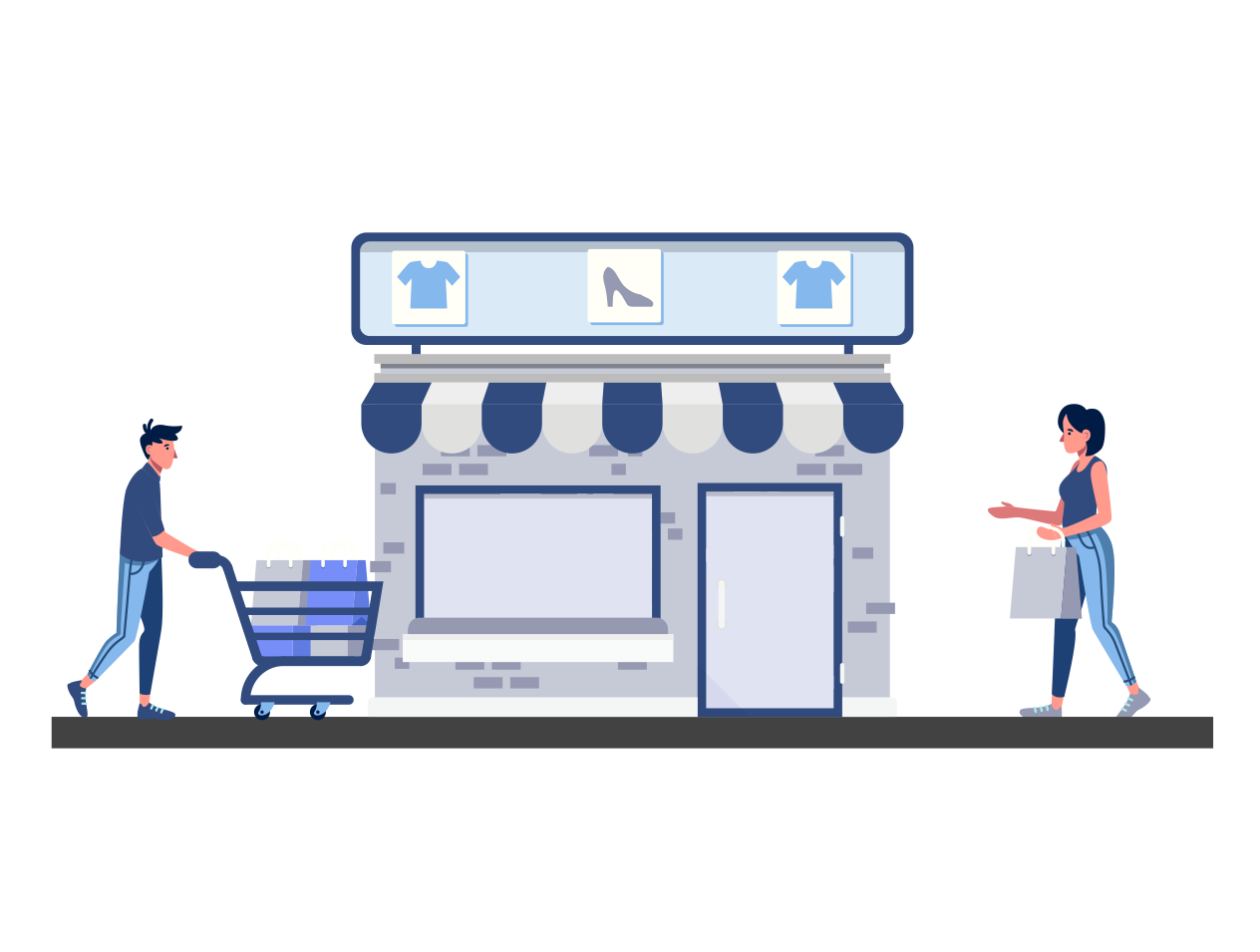Brick and mortar retail stores are under immense pressure and the writing is clear on the wall – reinvent or perish. Experts predict the demise of brick and mortar stores and the rise of online retail. But, is it so black and white?
Shoppers these days are looking for seamless buying experience – and the indicators point towards the evolution of omnichannel retail experience that compliments offline and online buying – allowing both to co-exist. For brick and mortar retailers, it is important to understand the reasons for growth of online retail – and how they can leverage advanced analytics and machine learning to fill the gaps – and make use of data-driven insights to drive shoppers to their stores.
If we look at market share data across markets, online retail is just about 15-20% of total retail market. That means, even though ecommerce is booming, offline retail still holds the bulk of retail market share. Given the consistent, healthy growth of ecommerce – it is important to look at it as a long term, existential threat.
And once retailers acknowledge the threat of ecommerce – they need to find solutions to the benefits ecommerce offers – and find ways to counter them. We present some of these here, mainly from the perspective of data, and how it can be leveraged using advance analytics and machine learning to generate insights – and provide a rich shopping experience.
Data advantages to ecommerce platforms:
a. Access to customer browsing data
b. Ease of personalization using purchase, browsing & product similarity
c. Access to shopper email and phone number
d. Dynamic offers & promotions
e. Drive customers to online store with targeted content & SEO
f. Ability to scale globally – allowing access to shoppers anywhere in the world
There are of course other benefits for ecommerce – lower warehousing cost, no (minimum) rentals for the online store compared to brick and mortar store. However, we focus our discussion on shoppers and leveraging shopper data to counter the growth of ecommerce.
1. Shopper Behavior: With the advancement of Machine Learning & AI, brick and mortar stores can make use of store traffic and heatmaps to understand the sections where shoppers spend more time, and trial and purchase behavior. This can provide retailers with insights that even ecommerce platforms don’t have – the items that a shopper considered, and the ones she tried before making a purchase decision
2. Personalized Loyalty Programs: Retailers need to come up with up with the right loyalty programs, and leverage CRM data to make personalized offers. The technology and analytics ecosystem allows retailers with the ability to develop personalized loyalty programs. There is not need for retailers to stick with a retention program that was designed in the 1980s as a marketing strategy for retention. Shoppers have moved on, and retailers should too!
3. Shopper Contractibility: An attractive loyalty program will encourage shoppers to share their email and phone number. Retailers need to identify the right time, right offer and the right place to make use of the personal information that a shopper has shared, and not make it a nuisance for the shopper. Location based targeting solutions should be combined with the CRM data to identify the right place to contact shoppers
4. Dynamic Offers & Promotions: With the growth in technology, there is no reason for retailers to stick to paper based static price & discount tags. Digital tags could be leveraged to make use of shoppers’ behavior and interactions with an item – to generate dynamic, customized offers
5. Targeted Content: The importance of a strong, data-driven marketing team comes into play. The marketing team should make use of ATL & BTL strategies to reach out to potential customers. The importance of market effectiveness, campaign deep dive and marketing channel deep dive will allow retailers to know what works and use the analyses results to finetune the marketing plan
6. Scalability: Brick and mortar retailers are not well placed to counter this advantage of ecommerce platforms. As a strategy, brick and mortar stores should focus on their strengths – drive hyperlocal and ensure deliveries in few hours
7. Social Platforms: Brick and mortar retailers need to invest in social insights (and not just listening) – to understand what shoppers are talking about within their segment, what products are generating social buzz and if these platforms can be leveraged to build a community of fans.
8. Own website & mobile apps: Even if a brick and mortar retailer has no plan to go online, having a website and a mobile app will allow them to engage with customers, know what products shoppers are searching and browsing for, leverage SEO & targeted content, create personalized loyalty programs – the opportunities are endless
Retailers should look at their strengths, weakness and opportunities vis-à-vis ecommerce platforms, and make use of immense competitive advantage that data-driven advance analytics, machine learning and AI have to offer. Rather than being bullied by the ecommerce platforms – it is time for brick and mortar retailers to fight back – and regain the lost ground.
Reach out to us if you would want to discuss any of the above, or any other solution you have in mind. Remember, it is not the size of the dog in the fight, but the size of the fight in the dog.




